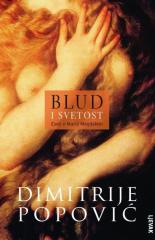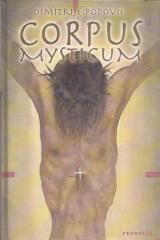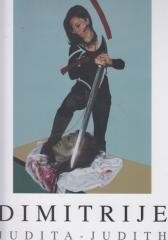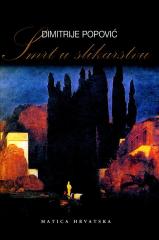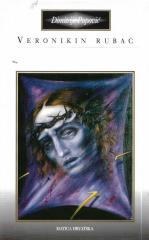Dimitrije Popović
Dimitrije Popović, slikar, kipar, grafičar i pisac (Cetinje, 1951). Diplomirao na Akademiji likovnih umjetnosti u Zagrebu 1976. Osebujnom crtačkom i slikarskom vještinom bilježi neobične figuralne kompozicije i likove. Pokazuje naglašenu sklonost istraživanju i destrukciji ljudskoga tijela, afektu te spajanju proturječnosti (erotskih tema s kristološkima, nadrealnih s klasičnima). Svoj je opus ostvario u ciklusima (Kukci, 1972–74; Mitološki motivi, 1977–78; Erotika, 1979–80; Corpus Mysticum, 1984–86; Marilyn Monroe, 1990; Hommage à Dalí, 2004). Autor je velikoga broja grafičkih mapa. Od kraja 1980-ih bavi se skulpturom, koju izvodi pretežito u bronci. Dosad je priredio sedamdesetak samostalnih izložbi u zemlji i inozemstvu i sudjelovao na više od tristo grupnih. Dobitnik je tridesetak domaćih i međunarodnih nagrada za likovnu umjetnost i književnost. Objavio je knjige Veronikin rubac (1996.), Smrt u slikarstvu (2001.), Priče iz Arkadije (2005.), Corpus Mysticum (2007.), Raspeće strasti (2008.), Blud i svetost (2010.), Smrt Danila Kiša (2011.), Luča Njegoševe noći (Zagreb, 2012.), Proces Kafkinoga Preobražaja (2013.), Ljubičasto ogledalo (2015.), Eros, krv i svetost (2017.), Uokvirene riječi i Labirinti sjećanja (2018.), Mit o ženi (2020.) i Likovni zapisi u doba korone (2021.). Član je Crnogorske akademije nauka i umjetnosti i Dukljanske akademije nauka i umjetnosti, Ruske akademije književnosti, Slavenske akademije književnosti i umjetnosti (Bugarska), Crnogorskog PEN centra, Društva hrvatskih književnika i Hrvatskog društva pisaca.
Naslovi u ponudi
Blud i svetost: Eseji o Mariji Magdaleni
Dimitrije Popović u knjizi Blud i svetost progovara o fatalnoj biblijskoj ženi Mariji Magdaleni koja od prostitutke postaje sveticom. Upravo ta unutarnja preobrazba intrigantne ženske osobnosti predstavlja preobrazbu iz bluda u svetost.
Corpus Mysticum
“Impresionante! Impresionante!” - Papa Ivan Pavao II. pred Dimitrijevim Raspećem, 1994.
Dimitrije: Judita - Judith
„U morfologiji ženskog bića ne postoje žudniji likovi od Judite i Salome, dviju žena koje nose dvije glave: svoju vlastitu i odsječenu“, piše u svojemu eseju o Salomi španjolski filozof José Ortega y Gasset.
Smrt u slikarstvu
Popović pregled tema o smrti prati od razdoblja renesanse do posljednjih desetljeća 20. stoljeća, u djelima pedesetak autora , od Grünewalda, Breuegela, Dürera, Boscha, Rembrandta i dr., do Picassa, Dalija, Magrittea, Bacona, Warhola, Kleina.
Veronikin rubac
Kako to izgleda kada jedan umjetnik sudi o djelima drugih umjetnika i kada istražuje, kako piše likovna kritičarka i pjesnikinja Gordana Benić, »zagonetne veze u umjetnosti kao prostoru u kojemu se spajaju slika i riječ«?
